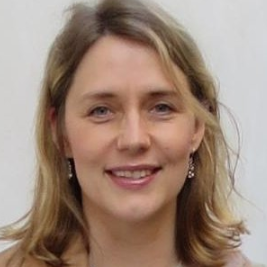
Pia S. Niemela
Work place: Tampere University of Technology/Pervasive Computing, Tampere, Finland
E-mail: pia.niemela@tut.fi
Website:
Research Interests: Software, Software Construction, Software Creation and Management, Software Development Process
Biography
Pia Niemelä works currently as a project researcher in the Finnish Academia funded project “Social media supporting Vocational Growth”, being a doctorate student in Pervasive Computing Dept. Previously, she participated Helsinki University research projects, Systemic Learning Solutions (SYSTECH) and (TUTLI), which developed educational learning solutions and commercialized them. Her background is in the industrial software development, the longest with Nokia, e.g. as a Java spec lead of Sensor API, JSR-256, and ServiceConnection API, JSR-279, which specifies RESTful web services for the mobile edition. She graduated from the Helsinki University of Technology in 1995, from the department of technical physics, completed pedagogical studies in Tampere University in 2015 and has worked as a STEM teacher both in Finland and Cambodia.
Author Articles
K-12 Curriculum Research: The Chicken and the Egg of Math-aided ICT Teaching
By Pia S. Niemela Martti Helevirta
DOI: https://doi.org/10.5815/ijmecs.2017.01.01, Pub. Date: 8 Jan. 2017
In this article, we examine the relationship in K-12 education between Mathematics and Information and Communication Technology (ICT). The topic is reviewed from various angles, based on both a literature study and by directly contrasting the Finnish National Curriculum (FNC) of 2014 (effective since autumn 2016) with the National Curriculums of the UK (UKNC)[3] and the US (USCC)[2].
Finland has chosen a cross-curricular approach to developing the new curriculum for teaching ICT, which involves integrating it mainly with math, but also with handicraft, and various other subjects. This is in direct contrast to the UKNC, for example, which teaches ICT as its own field, to be taught through the Computing and Design/Technology syllabi. This poses a question for this research study, namely, how well do teaching math and ICT fit together? The first step towards answering this question is to establish which ICT concepts and domains are directly supported by math and which are left uncovered. As a theoretical research paper, the rationale for the inter-connectedness of math and ICT is based on the work of many researchers. To illustrate our comparison of the two subjects, in this article we concentrate on clarifying math’s and ICT’s shared concepts of variable and function.
The results of this study indicate that transfer between the subjects happens bi-directionally, which might suggest that teaching ICT in combination with particular branches of math, notably algebra would be of benefit to our students. In order to pursue this approach, extra modules for logic, basic linear algebra and set theory would also be required. The fundamentals of basic algebra, the function and the variable, and their significance as synthesizers in both algebra and ICT are highlighted. In addition, the use of calculators as function tutors is explored in an instructional classroom setting. The conclusion of this study is that although there are certain benefits to the currently chosen approach of teaching ICT in combination with mathematics, these are not enough to outweigh the advantages of adopting a more versatile dedicated ICT syllabus, such as that provided by the UKNC.
Other Articles
Subscribe to receive issue release notifications and newsletters from MECS Press journals